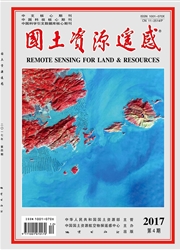

 中文摘要:
中文摘要:
地貌限制土地利用形式,土地利用类型又影响着地貌的形成与演化,基于以上关系提出一种辅以地貌类型的面向对象土地利用信息提取方法。以喀斯特地貌类型分布多样的安顺市为例,选取2010年的TM影像作为基本的数据源。首先,根据不同喀斯特地貌组合的尺度响应特征对试验区影像进行多尺度分割;进而利用数字高程模型( digital elevation model, DEM)数据以及衍生的坡度、地形起伏度和地表切割深度等特征,建立隶属度函数提取喀斯特地貌信息;最后,以地貌类型为基本分类单元,根据不同地貌类型的土地利用特点,采用面向对象的分类方法对土地利用信息进行提取。结果表明:面向对象的分类方法可以对喀斯特地貌类型进行自动提取,试验区地貌类型主要以峰丛谷地、峰丛洼地为主,峰林溶源与峰林盆地分布较少。土地利用类型以灌木与旱地为主,分别占总面积的25.58%和20.74%,土地利用信息提取总体精度达到87.35%。
 英文摘要:
英文摘要:
Landscape limited forms of land use and land use type influence the formation and evolution of the landscape. In view of that relationship, this paper proposes an object - oriented land use/land cover classification method. Taking Anshun City with diverse karst landform types as an example and using 2010 TM images as the basic data source, the authors divided the test data according to different scale response characteristics of different karst landforms combinations and with multi - scale segmentation technology. Using DEM data and the derivative features such as slope, relief amplitude, and surface incision and establishing membership functions determining the threshold, the authors extracted the karst landform information. Then, on the basis of landform types and according to the landuse characteristics of different landform types, the authors divided landuse types by using nearest neighbor analysis. Overall classification precision reached 87.35 %. Finally, the distribution characteristics of landform and land cover were discussed on the basis of the classification results. The results show that the landform types in the study area are mainly peak cluster valley and peak cluster depression, with a few karst pimple plains and hoodoo basins. Land cover types are mainly shrubs and dry land, which account for 25.58% and 20. 74% of total area respectively.
 同期刊论文项目
同期刊论文项目
 同项目期刊论文
同项目期刊论文
 期刊信息
期刊信息
